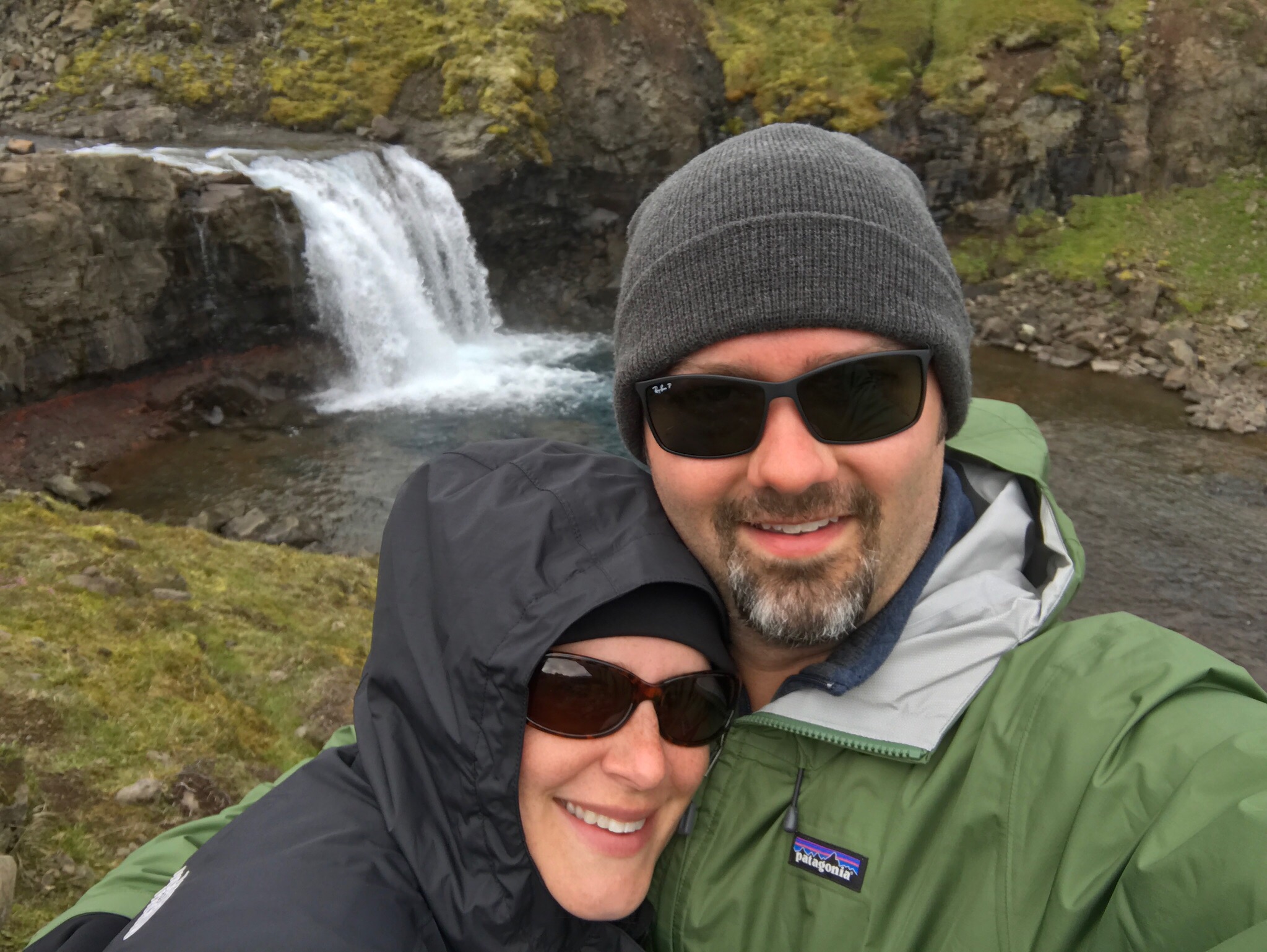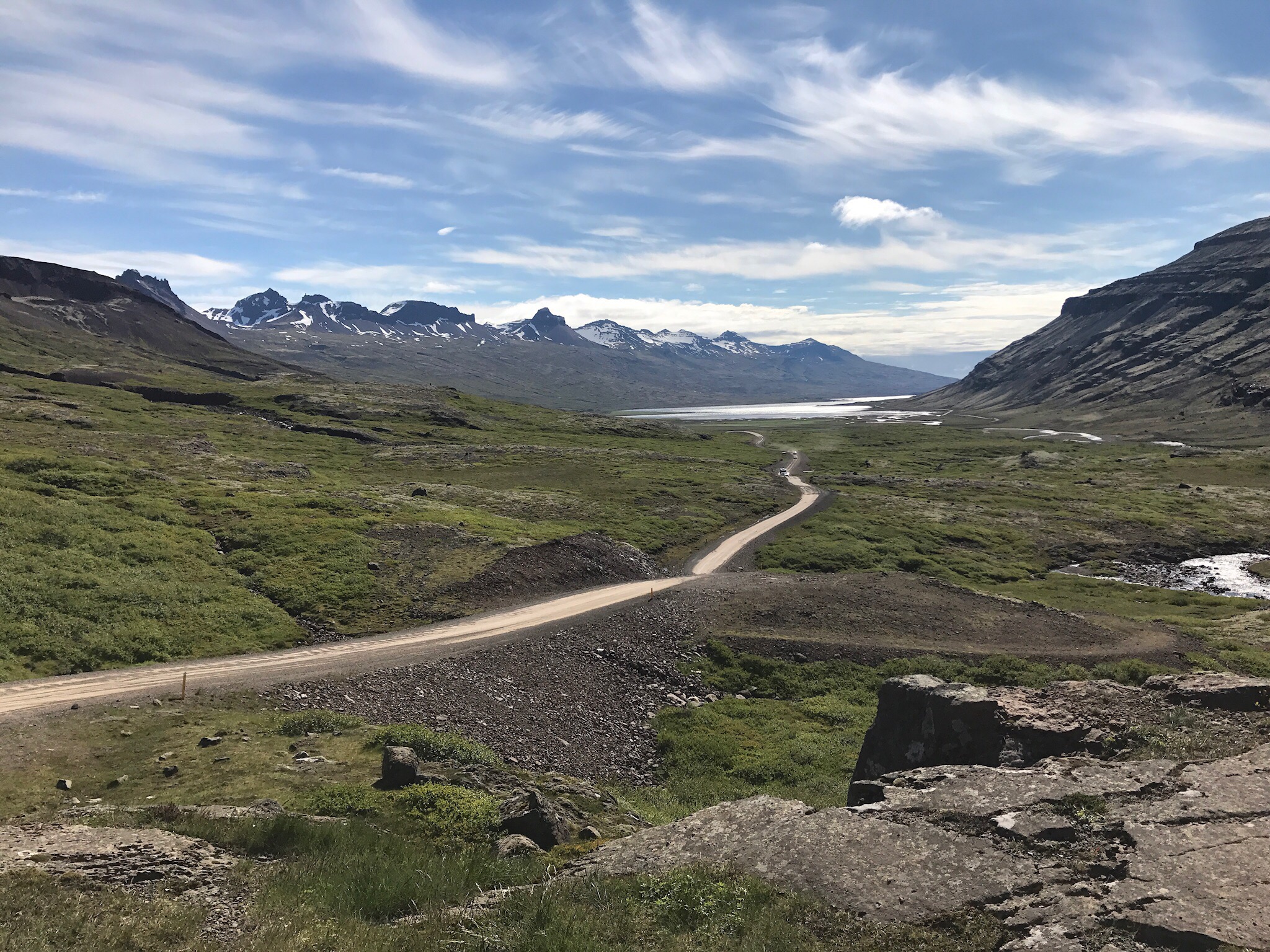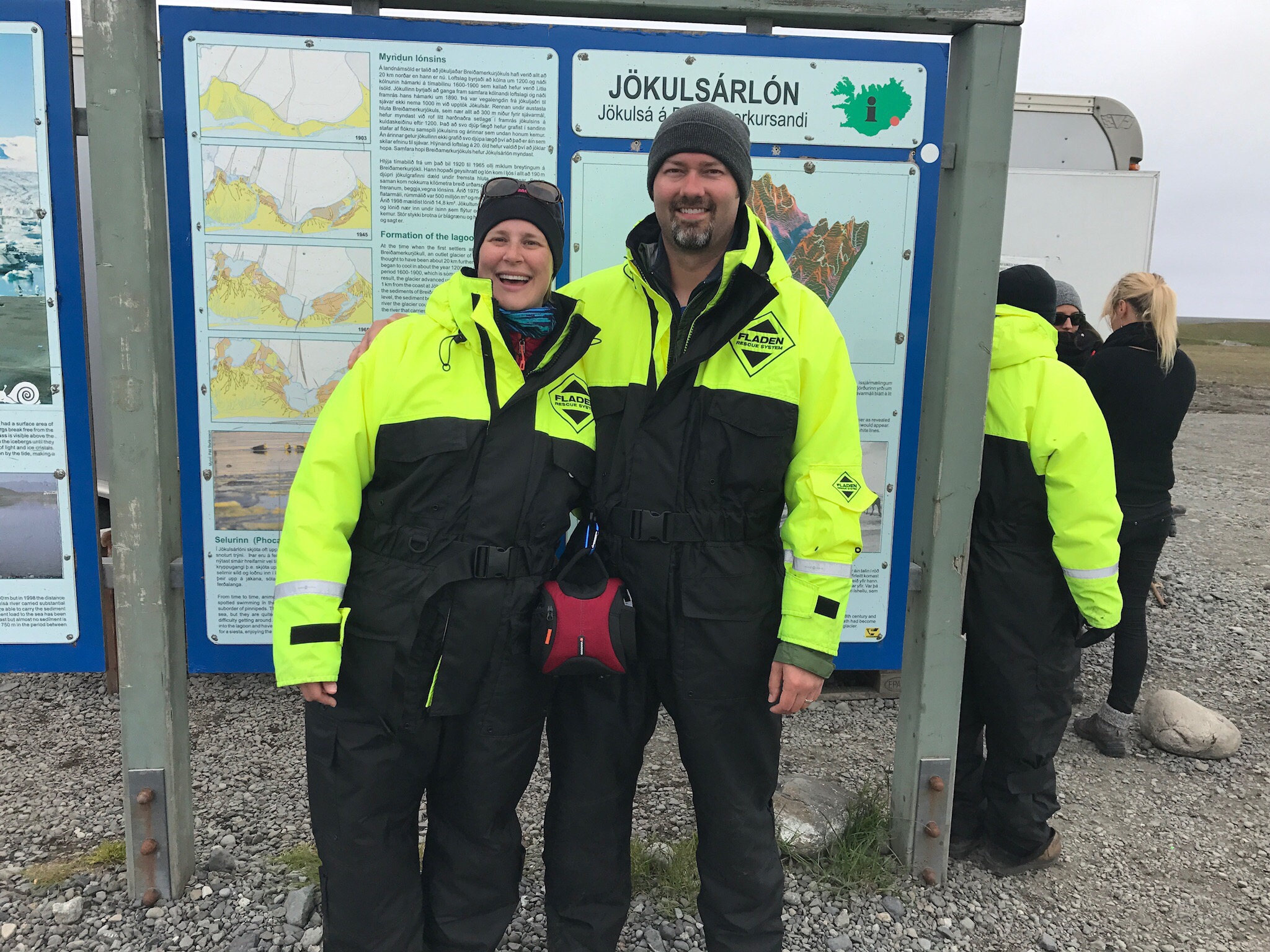Well, we finally did it. Eight days into our trip and we are finally stopping at a location recognizable from a movie. But that didn’t happen until the afternoon, so more on that later.
We originally had two options for this morning, but we decided that neither of them sounded particularly appealing to us anymore. Instead, we grabbed Eyjólfsstaðir Guesthouse breakfast, then explored a hiking trail around their property. A good portion of it followed a river, while other parts went through a small forest (a rarity in Iceland). It was a nice unplanned surprise.
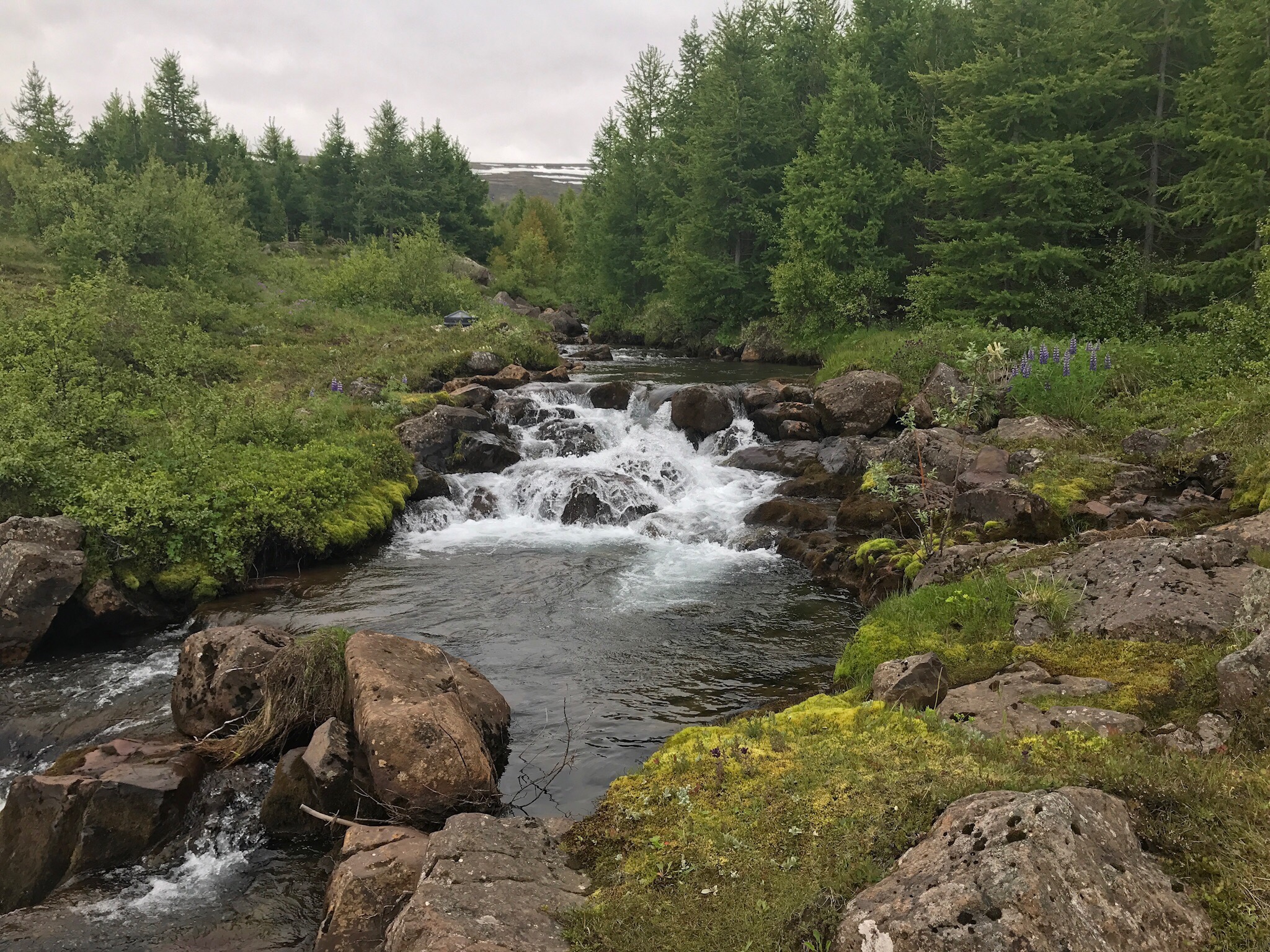
This was one of the falls in the river around the Guesthouse property. We were the only two out there, so it was very quiet and peaceful.
Next it was time for another nice surprise. Because we changed our morning plans, we really weren’t in a hurry to get to our next stop. Amber starting looking for caches we could grab on the way and found one called Öxi. The cache turned out to be named for Öxi waterfall, and it was just a kilometer or two down Road 939 from Road One. The cache description called it a “mountain road” and mentioned a 17% grade in parts, but it also said the road was well-maintained. Getting to the cache was no big deal, and we had a nice view of the waterfall from ground zero which has not been true of most waterfall caches. After signing the log, we decided to continue on 939 instead of heading back to the Ring Road. This turned out to be a great decision. We ended up going down the 17% grade instead of up which wasn’t too bad and allowed us some fabulous views over the fjord we were driving down to. We also stopped near another waterfall and had a nice hike around it. We would have missed all of this had we gone back to Road One and this was a significant shortcut, too.
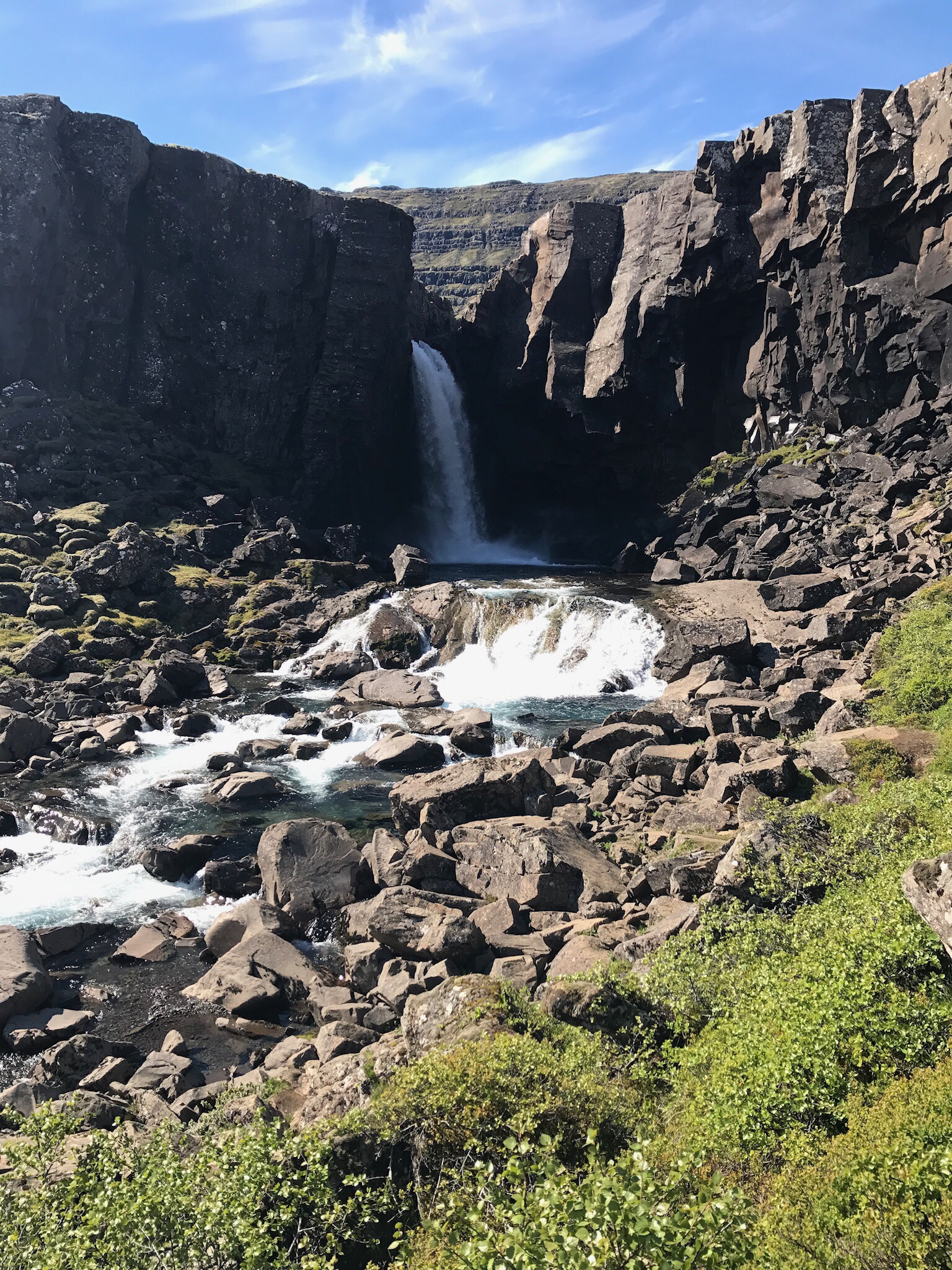
Our second bonus waterfall of the day. We didn’t know at the time, but a quick Google search says it was called Folaldafoss.
Now back to that movie thing. This afternoon we got to ride a Zodiac through Jökulsárlón Glacial Lagoon where James Bond drove an Aston Martin across the ice in Die Another Day. It should be noted that this lagoon is brackish and therefore does not naturally freeze over. To film the scene, the entrance to the lagoon had to be closed off for a period to prevent the salty sea water from flowing in. This allowed the lagoon water to clear up far enough to freeze.
To start this tour, we once again had to put on the big floatation suits and climb aboard the boat. This was a smaller zodiac than what we were on for the whales, but still a RIB. To sit on this one we had to prop ourselves on the inflated sides and hold on to the rope on top. Our guide was a true Icelander, born and raised in the south and recently relocated to the east. From him we learned that the portion of the icebergs that are in the water are blue because the ice is so dense that only the color blue is visible in it, while the part out of the water turns white after a few hours/days because the warmth of the sun loosens the water particles and allows all colors to penetrate through appearing white. Therefore, when you see a blue iceberg this is a sign that the iceberg has recently flipped over. In fact, there was one large iceberg that had flipped just before the tour prior to ours and you could clearly see tell which portion had previously been under the water (blue) and the part that had been above (white). Also, approximately 90% of each iceberg is beneath the surface of the water and approximately 10% is visible above. He also showed us a portion of the glacier that actually grows and replenishes each winter but this past winter it did not replenish. In fact, it continued to recede back. Yet another sign that the earth’s climate is changing.
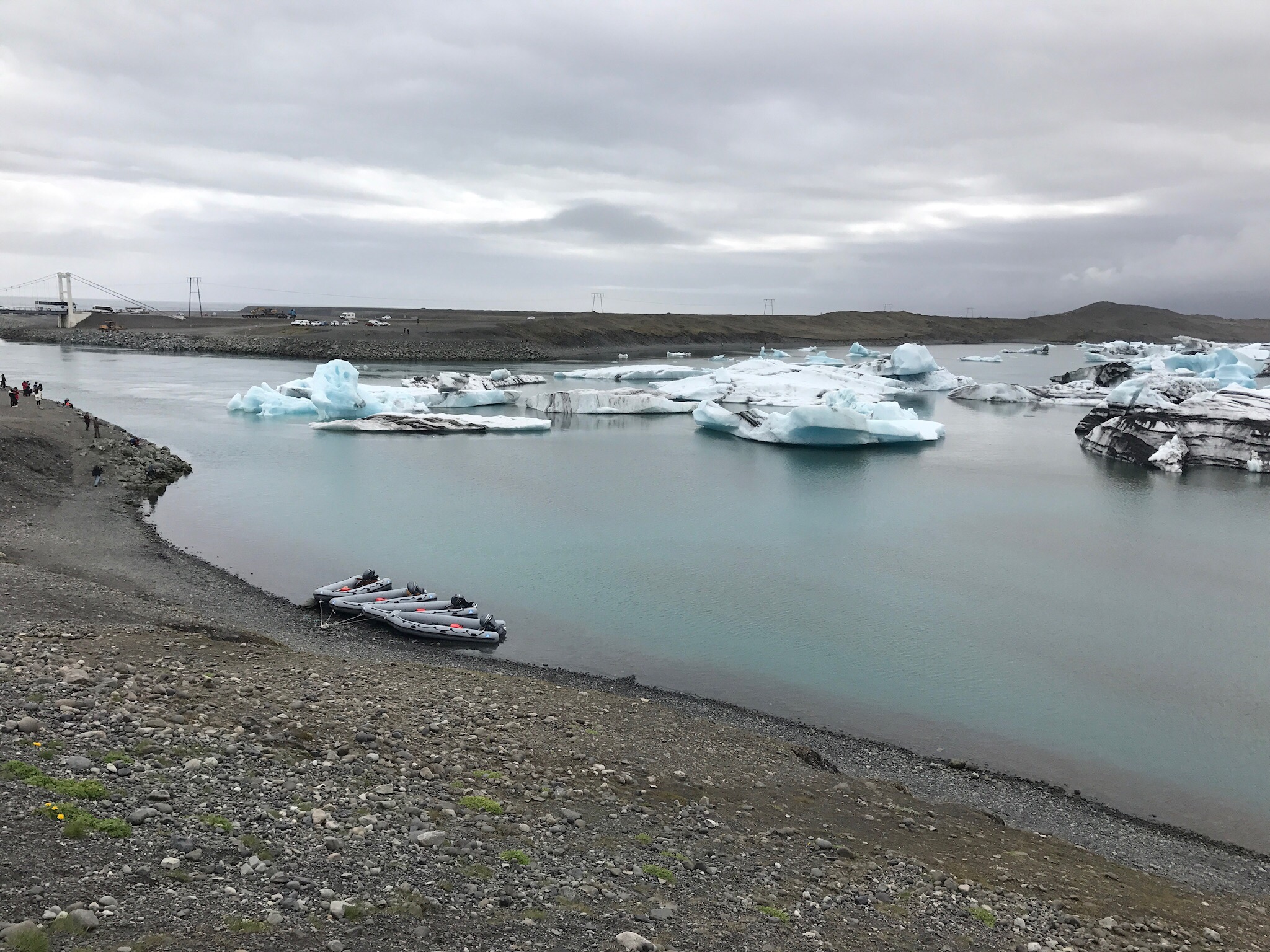
This is a view of the area of the lagoon right next to where it empties into the ocean. The current sort of swirls in the inlet under the bridge, so icebergs tend to stack up here. The zodiacs in the shot were used by tour staff following the larger Duck crafts used for different types of tours.
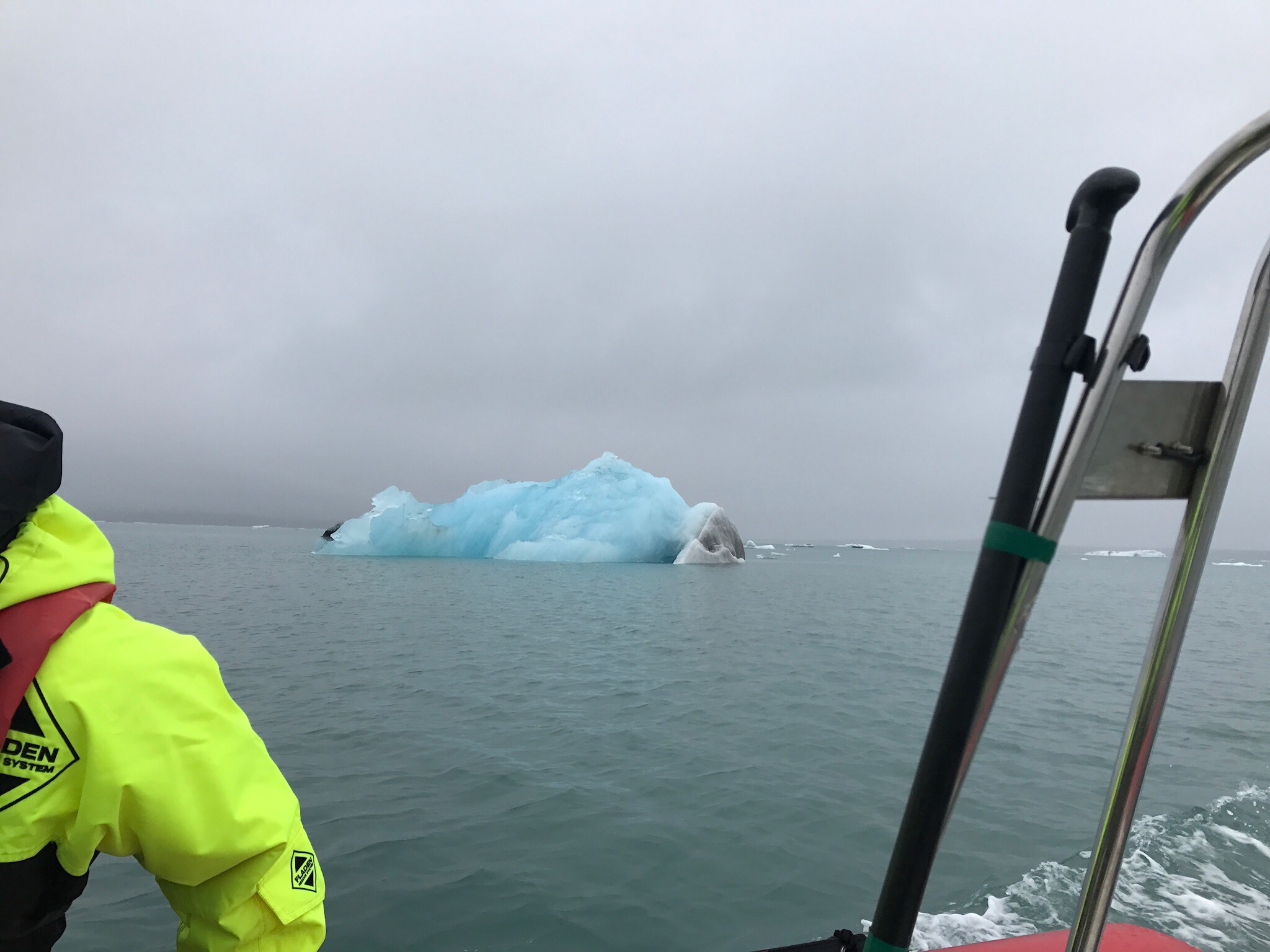
This is a good illustration of how much of an iceberg is underwater. The white end on the right was previously above water until it rolled onto its side shortly before we laid eyes on it.
Having been raised on a farm, our guide also talked a lot about the farming and agriculture of Iceland. He talked with us about how in the spring when the lambs are born they are marked in the ear with a tag that indicates which farm they belong to. Then the sheep are all banished from their land and actually fenced out and sent to roam the open hill and mountain sides until the fall. While the sheep are away, the farmers grow and bale the grasses on their land to store until the winter months. Then, in the fall, all the farmers in the region come together to walk all the hills and mountain sides gathering all the roaming sheep. They are then all herded into pens and sorted by farm, then hauled back to the respective farms by truck. At this point the lambs that were born the previous spring are sent to slaughter for our plates. Sad fate, but oh so yummy.
After a couple seal sightings we headed back to shore and on to Höfn. Our hotel for the night (Guesthouse Hvammur) did not offer breakfast and nothing in town would be open early enough for us to eat breakfast, so we headed over to the Nettó discount supermarket for a few fixen’s, dinner at Z Bistro for lamb and fish, then back to the hotel for bed.

